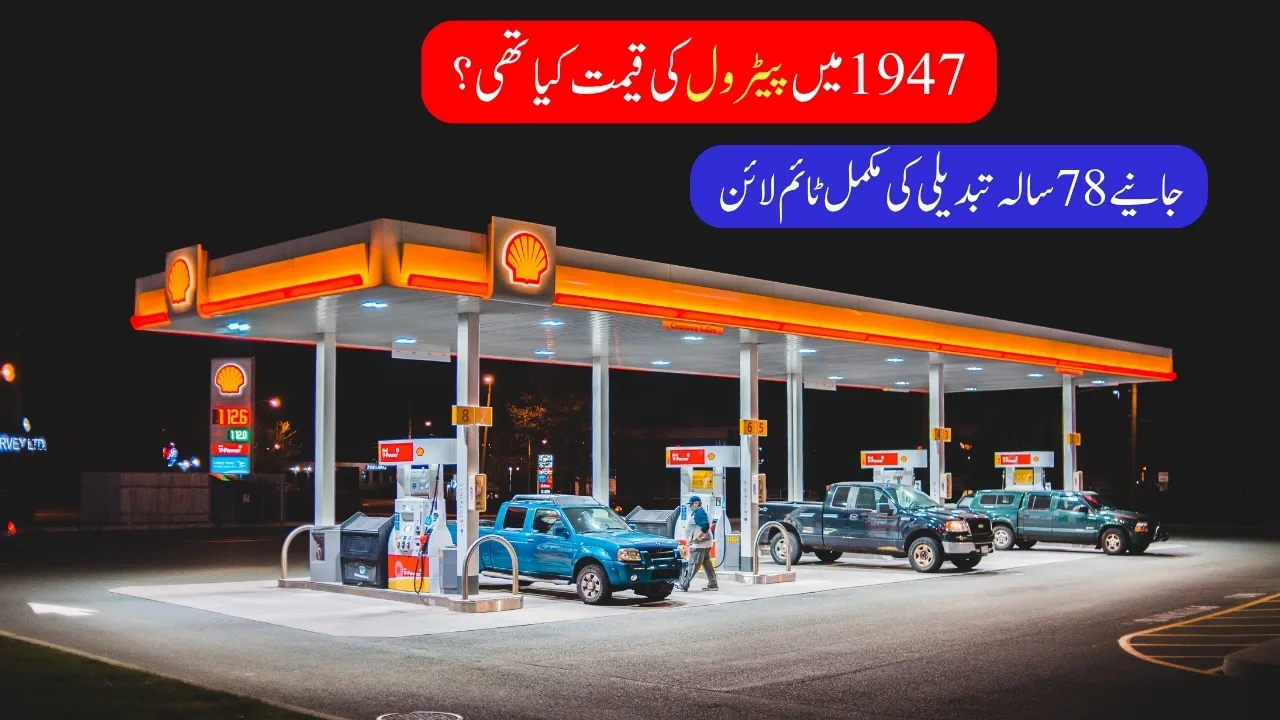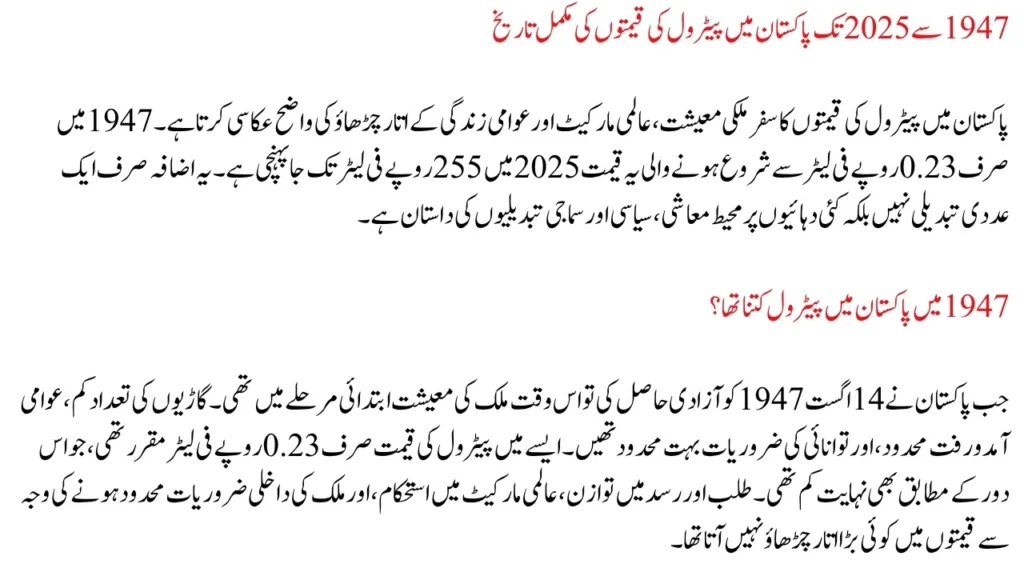Complete history of petrol prices in Pakistan from 1947 to 2025

History of petrol prices in Pakistan
The journey of petrol prices in Pakistan clearly reflects the fluctuations of the country’s economy, the global market and public life. Starting from just Rs 0.23 per liter in 1947, this price has reached Rs 255 per liter in 2025. This increase is not just a numerical change but a story of economic, political and social changes spanning decades.
Also Read: Suzuki Swift 2025 | Get it at 0% interest from Meezan Bank
How much was petrol in Pakistan in 1947?
When Pakistan gained independence on August 14, 1947, the country’s economy was in its infancy. The number of vehicles was low, public transport was limited, and energy needs were very limited. In such a situation, the price of petrol was fixed at only Rs 0.23 per liter, which was very low even for that era. Due to the balance in supply and demand, stability in the global market, and limited domestic needs of the country, there were no major fluctuations in prices.

Price hikes over decades: Key reasons
After the 1950s, Pakistan embarked on an industrial development path. Factories, vehicles, public transport, and urban population grew rapidly. Demand for petrol started increasing and so did prices.
After the global crude oil crisis in the 1970s, petrol started becoming expensive in Pakistan too. By 1975, the price had reached Rs 1.20 per litre. In 1980, it reached Rs 2.50, in 1990 it reached Rs 6.00, and by 2000 it had crossed Rs 30.
After 2008, when oil prices rose dramatically globally, these effects were also felt in Pakistan. Due to inflation, depreciation of the rupee, and government taxes, petrol prices continued to increase sharply. In 2022, the price reached Rs 150, in 2023, Rs 200, in 2024, Rs 252.66, and finally in 2025, Rs 255.63 per liter.
Why did petrol become expensive in Pakistan? Five major reasons
- Global crude oil prices: Pakistan imports most of its oil, so changes in the international market directly affect local prices.
- Rupee depreciation: When the rupee weakens against the dollar, imported goods become more expensive, including petrol.
- Government taxes: Various types of taxes such as Petroleum Development Levy (PDL) and sales tax are imposed on each liter of petrol.
- Inflation: Over time, production and delivery costs increased, which affected the price.
- Increased demand: The demand for fuel increased due to the increase in public transport, industries, and commercial activities.
Complete list of historical petrol prices in Pakistan (1947 – 2025)
| Years | Price (PKR per liter) |
|---|---|
| 1947 | 0.23 |
| 1950 | 0.27 |
| 1960 | 0.36 |
| 1970 | 0.48 |
| 1980 | 2.50 |
| 1990 | 6.00 |
| 2000 | 30.00 |
| 2010 | 73.08 |
| 2020 | 100.00 |
| 2025 | 255.63 |
Impact on the common man
The increase in petrol prices has had the greatest impact on the middle class. When petrol is expensive, not only transport becomes expensive but also the cost of food, services and industries increases. The purchasing power of the common salaried class is affected and the burden of inflation increases further.
Conclusion
From 1947 to 2025, each stage of petrol price increase provides a glimpse into Pakistan’s economy, global relations, and government policies. Understanding this historical journey is not only informative but also helps us prepare for the future.
FAQs
Q: What was the price of petrol in Pakistan in 1947?
A: Only Rs. 0.23 per liter.
Q: What is the price of petrol in Pakistan in 2025?
A: Rs. 255.63 per liter.
Q: What is the reason for the continuous increase in prices?
A: Global market, inflation, government taxes, and depreciation of the rupee.
Q: Does the price of petrol affect only vehicles?
A: No, it affects everything such as transport, food, services, etc.
